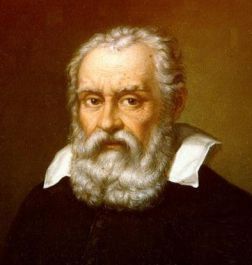INDEX
Let’s explore “temperature” which is the most important unit when using a temperature controller.
It is said that Galileo Galilei made the first attempt to quantitatively express the temperature of an object.
Without “quantification”, reproducibility cannot be obtained. This is a very important inspiration.
Galileo Galilei
“1592-Galileo Galilei inverts a glass column with a sphere over the surface of the water and creates an air thermometer that shows the surface of the water changes as the sphere warms.
However, there is an another view that Galileo’s friend Santorio Santorio (1561-1636) invented it.”
Unfortunately, because the thermometer made by Galilei is affected by atmospheric pressure, it was not possible to measure the temperature quantitatively.
Danbrich-born Gabriel Daniel Fahrenheit (1686-1736) improved the inaccuracy of liquid column thermometers by high-purity mercury from commonly used alcohols. In 1714, a precise mercury thermometer was completed. In 1717 commercial production was done in Amsterdam.
°F Fahrenheit
His achievements leave a name on the scale of the Fahrenheit thermometer. °F is an abbreviation for Farenheit degree.
France’s René Antoine Ferchault de Réaumur (1683-1757), invented the Reaumur scale (Reaumur degree) to divide into 80 parts between the freezing point and the boiling point of the water in 1731.
°R de Réaumur
Swedish astronomer Anders Celsius (1701-1744) proposed the scale of the Rheomule thermometer in 1742 from 80 to 100 divisions. This became the current Celsius thermometer. ℃ is an abbreviation for Celsius.
°C Celsius
William Thomson (Baron Kelvin of Largs, 1824-1907) led the concept of absolute temperature in 1848, where temperature represents the total amount of energy in an object. Absolute temperature came to be called Kelvin (K) after him.
°K Baron Kelvin
For Kelvin, the absolute zero at which all molecules stop moving was set to 0 Kelvin (K),
and 1 Kelvin was set to 1 / 273.16 times the thermodynamic temperature (0.01 ° C) of the triple point of water.
This was originally defined as a temperature scale with 273.15 subtracted from the Celsius degree (absolute zero was zero).
Relationship between Celsius degree and Kelvin degree
C = K − 273.15
K = C + 273.15
The kelvin, symbol K, is the SI unit of thermodynamic temperature. It is defined by taking the fixed numerical value of the Boltzmann constant k to be 6977138064900000000♠1.380649×10−23 when expressed in the unit J·K−1, which is equal to s−2·m2·kg K−1, where the kilogram, metre and second are defined in terms of h, c and ∆νCs.
